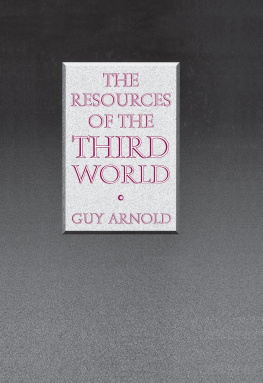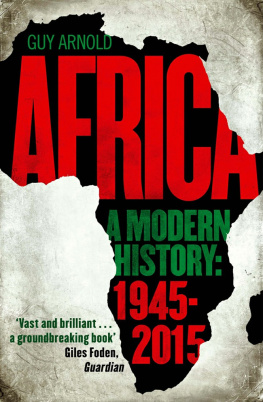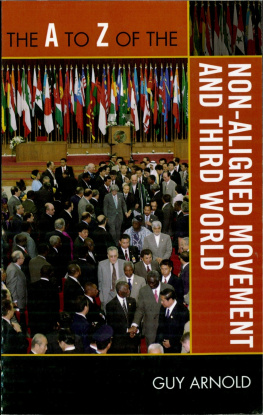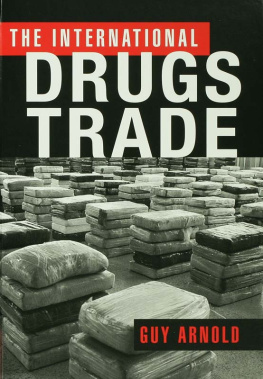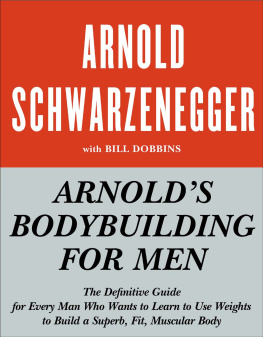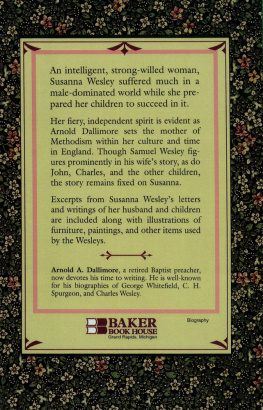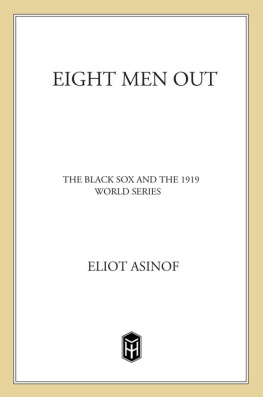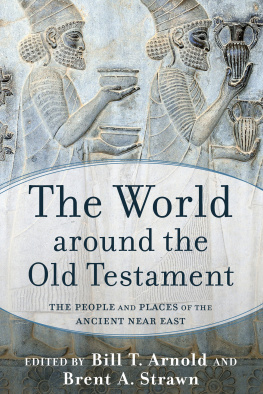The Resources of the Third World
The Resources of the Third World
Guy Arnold
First published 1997 by
Fitzroy Dearborn Publishers
Published 2013 by Routledge
2 Park Square, Milton Park, Abingdon, Oxon OX14 4RN
711 Third Avenue, New York, NY, 10017, USA
Routledge is an imprint of the Taylor & Francis Group, an informa business
Guy Arnold 1997
All rights reserved. No part of this publication may be reproduced or transmitted in any form or by any means, electronic or mechanical, including photocopying, recording or any information storage or retrieval system, without permission in writing from the publishers.
Guy Arnold is hereby identified as the author of this work as provided under Section 77 of the Copyright, Designs and Patents Act 1988.
British Library Cataloguing in Publication Data
A catalogue record for this book is available from the British Library.
Library of Congress Cataloging-in-Publication Data
Arnold, Guy.
The resources of the Third World/by Guy Arnold.
p. cm.
Includes bibliographical references.
1. Natural resources - Developing countries. 2. Developing countries - Population. I. Title.
HC59.7.A83358 1997
3333.7091722 - dc20
96-34108
CIP
ISBN 13: 978-1-579-58014-8 (hbk)
CONTENTS
North and Third World |
The three giants |
The crossover states |
The oil states |
Low- and middle-income economies |
Africa |
Latin America |
Asia |
The Caribbean |
The Pacific Ocean |
Country statistics have been derived from the following main sources:
BP Statistical Review of World Energy (1993, 1995). Group Media Publications
Britannia Book of the Year (1994, 1995, 1996). Encyclopaedia Britannica Inc., Chicago
The Gaia Atlas of Planet Management. Gen. Ed. Norman Myers, Pan Books, London, 1985
The Least Developed Countries 1996 Report. United Nations, New York and Geneva, 1996
Minerals in the World Economy. 1992 International Review, United States Department of the Interior, Washington DC.
The World Bank Annual Report (1994, 1995). The World Bank, Washington DC.
The World Development Report 1994. World Bank, Oxford University Press
The World Factbook 1993. Central Intelligence Agency, Office of Public and Agency Information, Washington DC.
INTRODUCTION:
DEFINITIONS
The resources available to a country comprise a far more complex combination of factors than the term might suggest. They include agricultural capacity, minerals, the ability to add value to raw materials and the state of education and training of the population. A highly developed country may have only limited agricultural capacity and few minerals but will compensate for this lack with a well-trained and educated population which is capable of maximizing resources by adding value to them even if, in the first place, most of these have to be imported as raw materials as is the case with Japan. A developing country may be blessed with rich resources, both agricultural and mineral, but lack the ability to add value and therefore to realize to the full its potential. Zaire illustrates this retarded state of development very well.
In the volume which follows the Third World or South (the terms are currently interchangeable) is broadly defined according to the classifications used by the World Bank in its annual World Development Report.1 These classifications are: low-income economies ranging from a minimum of $80 per capita (1995) to $670 per capita; middle-income economies which are divided into lower-middle-income and upper-middle-income economies with per capita incomes ranging from $670 to an upper level of $7,510. Above these levels are the high-income economies (the rich or developed) which are broadly synonymous with the Organization for Economic Cooperation and Development (OECD) countries and for convenience these have generally been referred to in the text as the countries of the North although the term includes Australia and New Zealand. Prior to the break-up of the Soviet Union and communist bloc there was a further classification of centrally planned economies; since 1992, however, the successor states of the Soviet Union have been redistributed among the above classifications. In this volume Russia is treated as a member of the North along with its former European soviets Belarus, Moldova, Ukraine and the three Baltic states (Estonia, Latvia and Lithuania) but not Armenia or Georgia which, with the Asian soviets of Azerbaijan, Kazakstan, Kyrgyzstan, Tajikistan, Turkmenistan and Uzbekistan, have been included in the Third World.
There are anomalies: Kuwait with a per capita income above $23,000 is still rated as a Third World country, as are Israel and Singapore because of other particular circumstances; and Bermuda which is both a mini-state and a dependent territory but has an income that places it among the high-income economies is again included here because of its vulnerable status, the result of small size and a tiny population. On the other hand, a number of European countries with low per capita incomes Bulgaria, Lithuania, Moldova, Rumania, for example are nevertheless included among the countries of the North, partly for political-geographical convenience and partly because they have long been accepted as belonging to the North despite their relative poverty and backwardness.
During the twenty-first century we are likely to witness a search for resources and a battle for their control and exploitation that will be far more ruthless than anything that has happened hitherto. The pressures of expanding populations and the exhaustion of current assets as well as the effects of ecological and climatic changes will make all states, whether developed or developing, wary of surrendering to outsiders control of the resources which they possess. These outsiders will come mainly in the form of transnational corporations. Instead, most countries will want to exercise maximum control over what are seen, increasingly, to be steadily dwindling assets. Some of todays fears will, no doubt, turn out to be groundless as new mineral discoveries are made or technology enables us to tap the ocean beds but while agricultural capacity is renewable, mineral resources, ultimately, are finite: they run out. What does seem certain is that resources and their control will move to the top of the economic/political agenda during the course of the next century.
Agriculture has always been the basis of any nations wealth and a country that can feed itself has an obvious advantage over one that is unable to do so. In the analyses that form the second part of this study agriculture is examined in relation to three questions: is a country able to feed itself; is it dependent upon food imports and if so by how much; and does it produce a surplus of either staples such as rice or wheat or tropical commodities such as cocoa or coffee for export.
Mineral resources from oil and coal for energy to copper and diamonds are the basis of industrialization and countries which are richly endowed with minerals are in a position, at least in theory, to create a strong manufacturing base. Here again, a number of questions have to be posed: to what extent are minerals being mined and exploited; who controls this process the government of the country or a transnational corporation; is value added to the minerals in the country of origin or are they simply shipped abroad in their raw state for value to be added elsewhere; and how large are the total resources? Some countries may possess large deposits of minerals copper in Afghanistan, bauxite in Malawi, for example which are not being mined at all at the present time for reasons of either remoteness or civil war and political instability. Nonetheless, such resources may represent a long-term asset for the future when more readily accessible equivalents have been exhausted and the value has increased.


